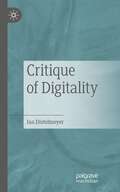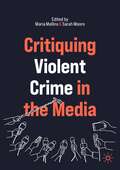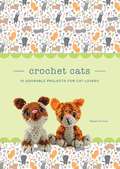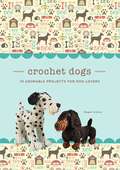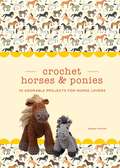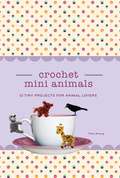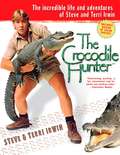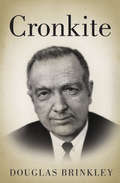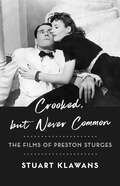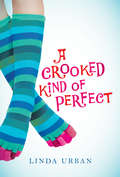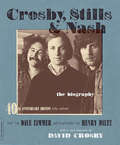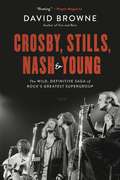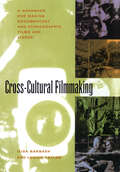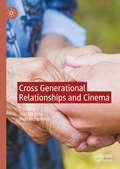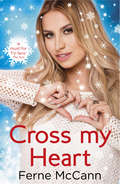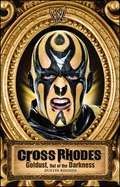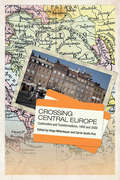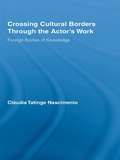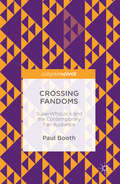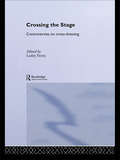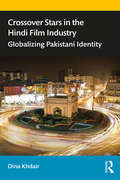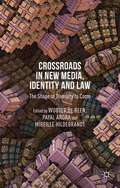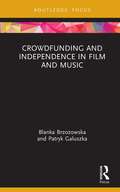- Table View
- List View
Critique of Digitality
by Jan DistelmeyerDealing with digitality is one of the most urgent challenges of the present. The increasing importance and spread of computer technology not only challenges societies and individuals - this development also puts pressure on the concept of digitality, which tries to grasp the totality and peculiarity of the conditions and consequences of electronic digital computing (in all its forms). However, precisely because digitality is commonplace, so should be its critique, its analysis and assessment.How can an analysis do justice to both fundamental characteristics and changing concrete forms, infrastructures, and practices? How do the developments of a digitalization that programmatically encompasses forms of networking, embedding, and autonomization shape media, cultures, and societies? How do "artificial intelligence" and "algorithmic government" relate to each other, how does the immateriality of "the digital" fit with the materiality of computers? How does the changing status and scope of this technology mediate itself?This book introduces ongoing debates and develops its own approach to the critique of digitality, asking about forms of interfaces and processes of governance. This book is a translation of the original German 1st edition Kritik der Digitalität by Jan Distelmeyer, published by Springer Fachmedien Wiesbaden GmbH, part of Springer Nature in 2021. The translation was done with the help of artificial intelligence (machine translation by the service DeepL.com). A subsequent human revision was done primarily in terms of content, so that the book will read stylistically differently from a conventional translation. Springer Nature works continuously to further the development of tools for the production of books and on the related technologies to support the authors.
Critiquing Violent Crime in the Media
by Maria Mellins Sarah MooreThis book explores the recent surge in true crime by critically exploring how murder and violence are represented in documentaries, films, podcasts, museums, novels and in the press, and the effects. From a range of contributors, it touches on a wide variety of topics overall and illustrates how examining true crime across the changing popular media landscape can contribute to important debates in contemporary culture and society. It encourages a critical eye towards understanding the harmful stereotypes, myths and misinformation that popular media can bring.Arranged into four sections, including: true crime trials, representations of victims, the consumption of serial killer narratives, and true crime spaces, each chapter explores different themes and topics across traditional and newer media. These topics include: emotion and appeals for justice in Making a Murderer, #MeToo and misogyny in crime narratives, true crime journalism being exploitative, the ethics of consuming dark tourism and the appetite for true crime, live streamed murder, and the ways in which true murder accounts might lend insight into other types of crime such as domestic violence and stalking. This book stimulates discussion on undergraduate courses in crime, media and culture as well as in film and media studies, and it also speaks to those with a general interest in true crime.
Crochet Cats: 10 Adorable Projects for Cat Lovers (Crochet Kits)
by Megan KreinerWe’re not “kitten around” with these adorable crochet projects!A ball of yarn has never yielded so much fun! This instruction book contains photos and illustrations to guide you in making ten projects. Crochet your very own collection of cuteness!
Crochet Dogs: 10 Adorable Projects for Dog Lovers (Crochet Kits)
by Megan KreinerYou’ll have a tail-wagging good time making these crochet canines!Crochet a pack of pups in ten different breeds, including a dalmatian, standard poodle, husky, corgi, chihuahua, Boston terrier, pug, dachshund, schnauzer, and a Labrador puppy! This 80-page instruction book contains photos and illustrations to guide you in making all ten projects.
Crochet Horses & Ponies: 10 Adorable Projects for Horse Lovers (Crochet Kits)
by Megan KreinerYou’ll be racing to create all ten of these pretty ponies!Saddle up to make ten adorable equestrian projects with Crochet Horses & Ponies! This 80-page instruction book contains photos and illustrations to guide you in making ten projects. If you have a horse fanatic in your life, this lovable herd of cuteness is the perfect addition to any stable.
Crochet Mini Animals: 12 Tiny Projects for Animal Lovers
by Thuy DuongCrochet these tiny projects to add to your miniature collection! Crochet Mini Animals contains photos and illustrations to guide you step-by-step in creating a mini menagerie that includes cats, elephants, giraffes, poodles, blackbirds, swans, lambs, llamas, sloths, koalas, hedgehogs, and pandas! If you squeal with delight over tiny, adorable handmade creatures, you&’ll be hooked on making these mini animals!
The Crocodile Hunter
by Steve Terri IrwinWhen Terri Raines was twenty-seven years old, she took a vacation that changed her life. Leaving behind her wildlife rescue work in Oregon, Terri traveled to Australia, and there, at a small wildlife park, she met and fell in love with a tall, blond force of nature named Steve Irwin. They were married in less than a year, and Terri eagerly joined in Steve's conservation work. The footage filmed on their crocodile-trapping honeymoon became the first episode of T"he Crocodile Hunter," and together, Steve and Terri began to change the world. In "Steve & Me," Terri recounts the unforgettable adventures they shared -- wrangling venomous snakes, saving deadly crocodiles from poachers, swimming among humpback whales. A uniquely gifted naturalist, Steve was first and foremost a wildlife warrior dedicated to rescuing endangered animals -- especially his beloved crocs -- and educating everyone he could reach about the importance of conservation. In the hit TV shows that continue to be broadcast worldwide, Steve's enthusiasm lives on, bringing little-known and often-feared species to light as he reveals and revels in the wonders of our planet. With grace, wit, and candor, Terri Irwin portrays her husband as he really was -- a devoted family man, a fervently dedicated environmentalist, a modest bloke who spoke to millions on behalf of those who could not speak for themselves. "Steve & Me" is a nonstop adventure, a real-life love story, and a fitting tribute to a man adored by all those whose lives he touched, written by the woman who knew and loved him best of all.
Cronkite
by Douglas BrinkleyFor decades, Walter Cronkite was known as "the most trusted man in America." Millions across the nation welcomed him into their homes, first as a print reporter for the United Press on the front lines of World War II, and later, in the emerging medium of television, as a host of numerous documentary programs and as anchor of the CBS Evening News, from 1962 until his retirement in 1981. Yet this very public figure, undoubtedly the twentieth century's most revered journalist, was a remarkably private man; few know the full story of his life. Drawing on unprecedented access to Cronkite's private papers as well as interviews with his family and friends, Douglas Brinkley now brings this American icon into focus as never before. Brinkley traces Cronkite's story from his roots in Missouri and Texas through the Great Depression, during which he began his career, to World War II, when he gained notice reporting with Allied troops from North Africa, D-day, and the Battle of the Bulge. In 1950, Edward R. Murrow recruited him to work for CBS, where he covered presidential elections, the space program, Vietnam, and the first televised broadcasts of the Olympic Games, as both a reporter and later as an anchor for the evening news. Cronkite was also witness to--and the nation's voice for--many of the most profound moments in modern American history, including the Kennedy assassination, Apollos 11 and 13, Watergate, the Vietnam War, and the Iran hostage crisis. Epic, intimate, and masterfully written, Cronkite is the much-anticipated biography of an extraordinary American life, told by one of our most brilliant and respected historians.
Crooked, but Never Common: The Films of Preston Sturges
by Stuart KlawansIn a burst of creativity unmatched in Hollywood history, Preston Sturges directed a string of all-time classic comedies from 1939 through 1948—The Great McGinty, The Lady Eve, Sullivan’s Travels, The Palm Beach Story, and The Miracle of Morgan’s Creek among them—all from screenplays he alone had written. Cynical and sophisticated, romantic and sexually frank, crazily breakneck and endlessly witty, his movies continue to influence filmmakers and remain popular to this day. Yet despite this acclaim, Sturges’s achievements remain underappreciated: he is too often categorized as a dialogue writer and plot engineer more than a director, or belittled as an irresponsible spinner of laughs.In Crooked, but Never Common, Stuart Klawans combines a critic’s insight and a fan’s enthusiasm to offer deeper ways to think about and enjoy Sturges’s work. He provides an in-depth appreciation of all ten of the writer-director’s major movies, presenting Sturges as a filmmaker whose work balanced slapstick and social critique, American and European traditions, and cynicism and affection for his characters. Tugging at loose threads—discontinuities, puzzles, and allusions that have dangled in plain sight—and putting the films into a broader cultural context, Klawans reveals structures, motives, and meanings underlying the uproarious pleasures of Sturges’s movies. In this new light, Sturges emerges at last as one of the truly great filmmakers—and funnier than ever.
A Crooked Kind of Perfect
by Linda UrbanTen-year-old Zoe Elias has perfect piano dreams. She can practically feel the keys under her flying fingers; she can hear the audience's applause. All she needs is a baby grand so she can start her lessons, and then she'll be well on her way to Carnegie Hall. But when Dad ventures to the music store and ends up with a wheezy organ instead of a piano, Zoe's dreams hit a sour note. Learning the organ versions of old TV theme songs just isn't the same as mastering Beethoven on the piano. And the organ isn't the only part of Zoe's life that's off-kilter, what with Mom constantly at work, Dad afraid to leave the house, and that odd boy, Wheeler Diggs, following her home from school every day. Yet when Zoe enters the annual Perform-O-Rama organ competition, she finds that life is full of surprises--and that perfection may be even better when it's just a little off center.
Crosby, Stills & Nash: The Biography
by Dave Zimmer Henry DiltzCrosby, Stills & Nash created some of the most indelible songs and beautiful harmonies of the late 1960s and early 1970s: "Suite: Judy Blue Eyes,” "Woodstock,” "Teach Your Children. ” This copiously illustrated account of the trio’s personal and musical history tells the story behind the songs. Longtime CSN chronicler Dave Zimmer, with the full cooperation of the band, traces all of the performers from their musical roots to their first song together in L. A. ’s storied Laurel Canyon; from their addition of Neil Young to Woodstock; and through their stormy years of creative conflicts, reunions, and reconciliations. This new edition has been fully reconfigured and updated to celebrate the trio’s 40th anniversary and to accommodate over 300 photos, as well as Crosby, Stills, Nash & Young’s controversial Living with War tour.
Crosby, Stills, Nash and Young: The Wild, Definitive Saga of Rock's Greatest Supergroup
by David Browne"In what is the most comprehensive biography of the group to date, Browne compiles a fun and fast-paced music history.... an authoritative chronicle." --Publishers WeeklyThe first and most complete narrative biography of Crosby, Stills, Nash and Young, by acclaimed music journalist and Rolling Stone senior writer David Browne Even in the larger-than-life world of rock and roll, it was hard to imagine four more different men. David Crosby, the opinionated hippie guru. Stephen Stills, the perpetually driven musician. Graham Nash, the tactful pop craftsman. Neil Young, the creatively restless loner. But together, few groups were as in sync with their times as Crosby, Stills, Nash and Young. Starting with the original trio's landmark 1969 debut album, the group embodied much about its era: communal musicmaking, protest songs that took on the establishment and Richard Nixon, and liberal attitudes toward partners and lifestyles. Their group or individual songs--"Wooden Ships," "Suite: Judy Blue Eyes," "After the Gold Rush," "For What It's Worth" (with Stills and Young's Buffalo Springfield), "Love the One You're With," "Long Time Gone," "Just a Song Before I Go," "Southern Cross"--became the soundtrack of a generation. But their story would rarely be as harmonious as their legendary and influential vocal blend. In the years that followed, these four volatile men would continually break up, reunite, and disband again--all against a backdrop of social and musical change, recurring disagreements and jealousies, and self-destructive tendencies that threatened to cripple them both as a group and as individuals. In Crosby, Stills, Nash and Young: The Wild, Definitive Saga of Rock's Greatest Supergroup, longtime music journalist and Rolling Stone writer David Browne presents the ultimate deep dive into rock and roll's most musical and turbulent brotherhood on the occasion of its 50th anniversary. Featuring exclusive interviews with David Crosby and Graham Nash along with band members, colleagues, fellow superstars, former managers, employees, and lovers-and with access to unreleased music and documents--Browne takes readers backstage and onstage, into the musicians' homes, recording studios, and psyches, to chronicle the creative and psychological ties that have bound these men together--and sometimes torn them apart. This is the sweeping story of rock's longest-running, most dysfunctional, yet pre-eminent musical family, delivered with the epic feel their story rightly deserves.
Cross-Cultural Connections in Crime Fictions
by Vivien Miller Helen OakleyA collection of ten original essays forging new interdisciplinary connections between crime fiction and film, encompassing British, Swedish, American and Canadian contexts. The authors explore representations of race, gender, sexuality and memory, and challenge traditional categorisations of academic and professional crime writing.
Cross-Cultural Filmmaking: A Handbook for Making Documentary and Ethnographic Films and Videos
by Ilisa Barbash Lucien TaylorThis extraordinary handbook was inspired by the distinctive concerns of anthropologists and others who film people in the field. The authors cover the practical, technical, and theoretical aspects of filming, from fundraising to exhibition, in lucid and complete detail—information never before assembled in one place. The first section discusses filmmaking styles and the assumptions that frequently hide unacknowledged behind them, as well as the practical and ethical issues involved in moving from fieldwork to filmmaking. The second section concisely and clearly explains the technical aspects, including how to select and use equipment, how to shoot film and video, and the reasons for choosing one or the other, and how to record sound. Finally, the third section outlines the entire process of filmmaking: preproduction, production, postproduction, and distribution. Filled with useful illustrations and covering documentary and ethnographic filmmaking of all kinds, Cross-Cultural Filmmaking will be as essential to the anthropologist or independent documentarian on location as to the student in the classroom.
Cross Generational Relationships and Cinema
by Joel Gwynne Niall RichardsonDepictions of cross generational relationships have always been present in popular cinema. While such relationships have historically operated within the framework of heteronormativity, and have usually explored cross generational romance in the context of older men/younger women, contemporary depictions have expanded to focus also on taboo configurations of love between older women and younger men and cross generational LGBT coupledom. Contemporary depictions have sought to complicate not only heteronormativity in cross generational relationships, but also to navigate the differences between socially acceptable love and transgressive desire. This collection focuses on the changing values and attitudes of cross generational relationships and addresses the often divisive relationship between the discourses of youth and ageing in popular culture.
Cross My Heart
by Ferne McCannFerne McCann is a TV personality, style icon and influencer and for the first time she's telling her story.In Cross My Heart, Ferne tells her own story in her own words. She lifts the lid on love and heartbreak, the ups and downs behind the scenes of ITV''s much loved reality TV show, TOWIE and what really went on in the I'm A Celebrity ... Get Me Out of Here! jungle, the show that was the best thing that ever happened to her. It promises to be candid, moving and, above all, a story told with Ferne's characteristic wit and honesty.
Cross Rhodes
by Mark Vancil Dustin RhodesHe first burst onto the scene in the nineties, covered in gold face paint and exhibiting a one-of-a- kind flamboyant style that bewildered his foes and thrilled his fans. Inside the ring, Goldust is as tough as they come, known for using outrageous mind games and taking down his opponents with unparalleled ruthlessness. It's no surprise, then, that wrestling is in his blood; Goldust is the son of Dusty Rhodes, "The American Dream." What is it like to be the son of a wrestling icon and follow him into the same profession? In this no-holds-barred account, Dustin Rhodes speaks frankly and openly about his journey. He talks about being a young boy who desperately missed his dad. A young man who only wanted to follow in his father's footsteps and threw aside a football scholarship to eke out a meager existence in regional wrestling. A green wrestler struggling to prove to his peers that his work, not his name, had gotten him to where he was. Rhodes describes how, in the midst of a painful five-year estrangement with his father, he finally made a name for himself as Goldust and then let it all go, tumbling into a descent of self-medication that led him away from a red-hot career as a WWE Superstar and nearly cost him his life. When he finally hit bottom, Rhodes knew where to look for help from the family he always had: his father and World Wrestling Entertainment. When he got clean and sober and was offered the chance to wrestle for WWE, he snapped up the offer. The everyday existence of life on the road, working with and watching the new Superstars-- like his brother Cody Rhodes--has reminded Rhodes of why he loves being a wrestler. Cross Rhodes is an intimate portrait of one man's road to redemption and a unique glimpse into one of the most famous families in WWE.
Crossing Central Europe: Continuities and Transformations, 1900-2000
by Helga Mitterbauer Carrie Smith-PreiCrossing Central Europe is a pioneering volume that focuses on the complex networks of transcultural interrelations in Central Europe from 1900 to 2000. Scholars from Canada, the United States, and Europe identify the motifs, topics, and ways of artistic creation that define this cross-cultural region. This interdisciplinary volume is divided into two historical periods and includes analyses of literature, film, music, architecture, and media. By focusing first on the interrelations in the nineteenth and early twentieth-century, the contributors reveal a complex trans-ethnic network at play that disseminated aesthetic ideals. This network continued to be a force of aesthetic influence leading into the twenty-first century despite globalization and the influence of mass media. Helga Mitterbauer and Carrie Smith-Prei have embarked on a study of the overlapping artistic influences that have outlasted both the National Socialist regime and the Cold War.
Crossing Cultural Borders Through the Actor's Work: Foreign Bodies of Knowledge (Routledge Advances in Theatre & Performance Studies)
by Cláudia Tatinge NascimentoA sophisticated analysis of how the intersection of technique, memory, and imagination inform performance, this book redirects the intercultural debate by focusing exclusively on the actor at work. Alongside the perspectives of other prominent intercultural actors, this study draws from original interviews with Ang Gey Pin (formerly with the Workcenter of Jerzy Grotowski and Thomas Richards) and Roberta Carreri (Odin Teatret). By illuminating the hidden creative processes usually unavailable to outsiders--the actor’s apprenticeship, training, character development, and rehearsals--Nascimento both reveals how assumptions based on race or ethnicity are misguiding, trouble definitions of intra- and intercultural practices, and details how performance analyses and claims of appropriation fail to consider the permanent transformation of the actor’s identity that cultural transmission and embodiment represent.
Crossing Fandoms: SuperWhoLock and the Contemporary Fan Audience
by Paul BoothThis book examines the fan-created combination of Doctor Who, Sherlock, and Supernatural as a uniquely digital fan experience, and as a metaphor for ongoing scholarship into contemporary fandom. What do you get when you cross the cult shows Doctor Who, Supernatural, and Sherlock? In this book, Paul Booth explores the fan-created crossover universe known as SuperWhoLock--a universe where Sherlock Holmes and Dean Winchester work together to fight monsters like the Daleks and the Weeping Angels; a world where John Watson is friends with Amy Pond; a space where the unique brands of fandom interact. Booth argues that SuperWhoLock represents more than just those three shows--it is a way of doing fandom. Through interviews with fans and analysis of fan texts, Crossing Fandoms: SuperWhoLock and the Contemporary Fan Audience also demonstrates how fan studies in the digital age can evolve to take into account changing fan activities and texts.
Crossing the Stage: Controversies on Cross-Dressing
by Lesley FerrisCrossing the Stage brings together for the first time essays which explore cross-dressing in theatre, cabaret, opera and dance. The volume contains seminal pieces which have become standard texts in the field, as well as new work especially commissioned from leading writers on performance.Crossing the Stage is an indispensable sourcebook on theatrical cross-dressing. It will be essential reading for all those interested in performance and the representation of gender.
Crossover Stars in the Hindi Film Industry: Globalizing Pakistani Identity
by Dina KhdairThis book explores the cultural politics of Pakistani crossover stardom in the Hindi film industry as a process of both assimilation and “Otherness”. Analysing the career profiles of three crossover performers – Ali Zafar, Fawad Khan, and Mahira Khan – as a relevant case study, it unites critical globalization studies with soft power theory in exploring the potential of popular culture in conflict resolution. The book studies the representation and reception of these celebrities, while discussing themes such as the meaning of being a Pakistani star in India, and the consequent identity politics that come into play. As the first comprehensive study of Pakistani crossover stardom, it captures intersections between political economy, cultural representation, and nationalist discourse, at the same time reflecting on larger questions of identity and belonging in an age of globalization. Crossover Stars in the Hindi Film Industry will be indispensable to researchers of film studies, media and cultural studies, popular culture and performance, peace and area studies, and South Asian studies. It will also be of interest to enthusiasts of Indian cinematic history.
Crossroads in New Media, Identity and Law
by Wouter De Been Payal Arora Mireille HildebrandtThis volume brings together a number of timely contributions at the nexus of new media, politics and law. The central intuition that ties these essays together is that information and communication technology, cultural identity, and legal and political institutions are spheres that co-evolve and interpenetrate in myriad ways. Discussing these shifting relationships, the contributions all probe the question of what shape diversity will take as a result of the changes in the way we communicate and spread information: that is, are we heading to the disintegration and fragmentation of national and cultural identity, or is society moving towards more consolidation, standardization and centralization at a transnational level? In an age of digitization and globalization, this book addresses the question of whether this calls for a new civility fit for the 21st century.
Crowd Funding for Filmmakers: The Way to a Successful Film Campaign
by John T. TrigonisThis book offers practical information, tips, and tactics for launching a successful film campaign by detailing traditional models of fundraising, utilizing today’s technological and social innovations, and augmenting each step with an added personal touch. This 2nd edition updates the latest techniques on Social Media to get your projects up and running asap.
Crowdfunding and Independence in Film and Music (Routledge Focus on Media and Cultural Studies)
by Blanka Brzozowska Patryk GaluszkaThis book explores how independent film and music artists and labels use crowdfunding and where this use places crowdfunding in the contemporary system of cultural production. It complements an analysis of independence in film and music with the topic of crowdfunding as a firmly established form of financing cultural activity. In the second half of the 20th century, the concept of artistic independence was vital to classifying and distinguishing artists, their works, and labels or publishers who released them. However, during the last three decades, this term has become increasingly blurred, and some commentators argue that independence is in crisis. Can crowdfunding be the answer to this crisis? Some believe that it is, whereas others argue otherwise, seeing crowdfunding instead as just the next manifestation of this crisis. This dilemma is a starting point for the analyses of the relationships between crowdfunding and artistic independence conducted in this book, and will be of great interest to people looking for a deeper understanding of crowdfunding, how it can influence artistic independence, and what it means for artists and audiences. It will be a stimulating read for scholars and students with an interest in media and cultural studies, digital humanities, fandom, sociology, economics, business studies, and law, while also offering insights to artists and practitioners in the creative industries.
